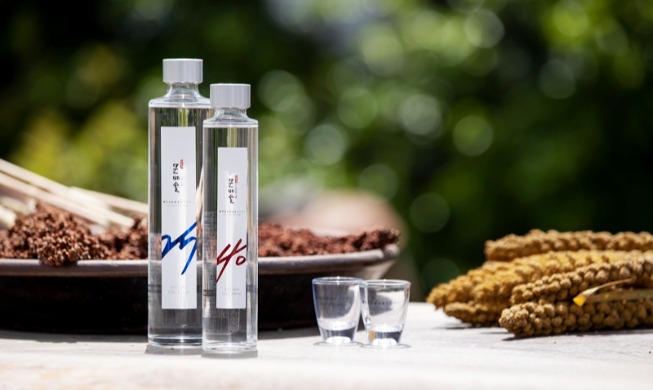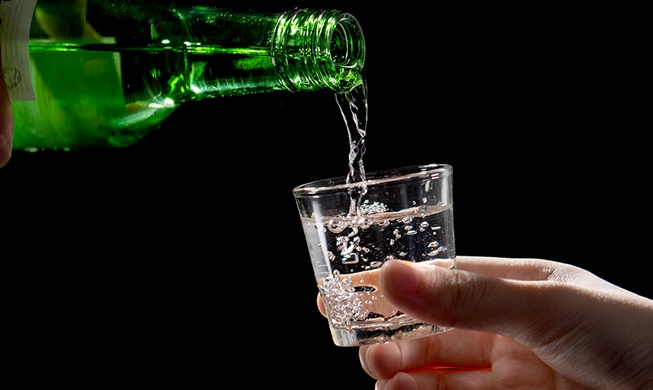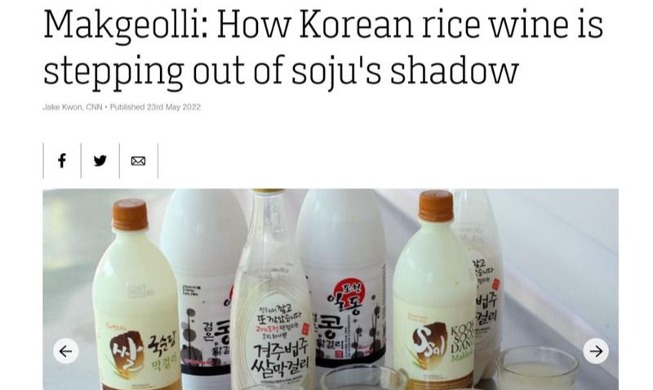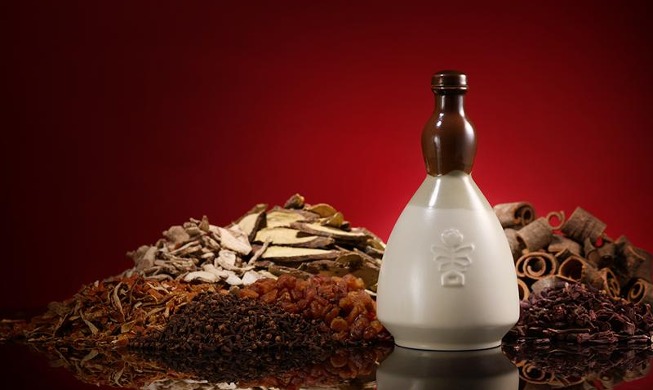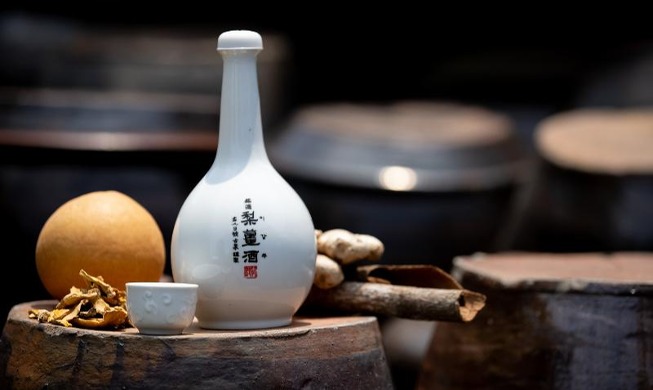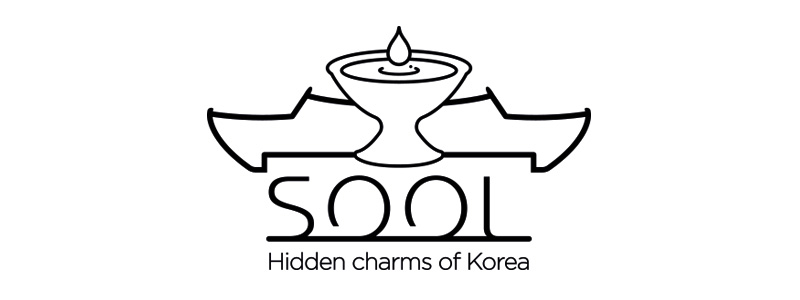
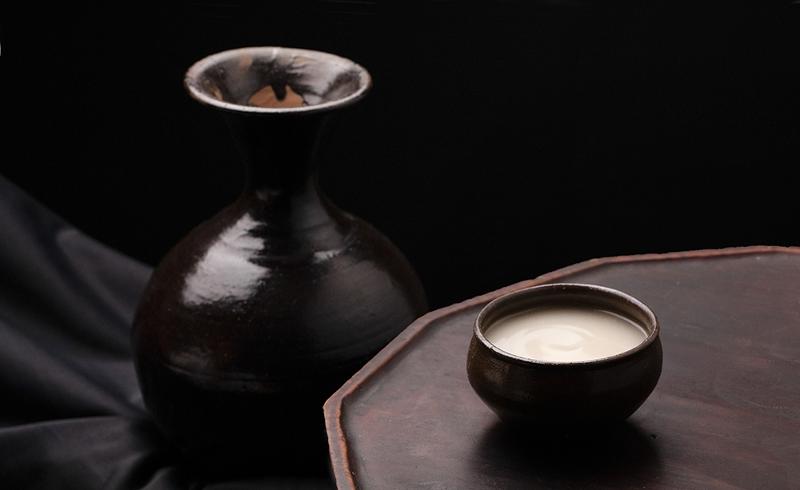
Among drinks classified as takju (cloudy alcohol), makgeolli (milky rice wine) has the lowest alcohol by volume.
By Min Yea-Ji
Photos = Kim Sunjoo
Video = Lee Jun Young
Busan
The nuruk (fermentation starter) room of Geumjeongsanseong Makgeolli, a manufacturer of the milky rice wine makgeolli, is halfway up Geumjeongsanseong Fortress in Busan. Hundreds of nuruk were seen on the shelves after Korea.net staff entered the room.
Room temperature is maintained around the clock by a briquet fire in the room covering 10 square m at 48-50 degrees Celsius.
The nuruk there is shaped like pizza dough with a diameter of about 30 cm. A closer look shows molds of varying colors growing on it.
Geumjeongsanseong Makgeolli CEO Yoo Cheong-gil said, "These are called hwangguk (yellow nuruk mold), baekguk (white nuruk mold) and heukguk (black nuruk mold)," adding, "The characteristic of Sanseong Nuruk (brand name) is that it contains all three types."
Because of the array of nuruk molds, the brand's makgeolli offers a variety of flavors and tastes.
Among makgeolli makers that use traditional nuruk, Geumjeongsanseong Makgeolli was the first to gain recognition as folk liquor and the country's only maker designated a "food master." Among makgeolli distilleries with distribution networks nationwide, the company is the only one to use traditional nuruk.
When Japan ruled the Korean Peninsula from 1910-45, makgeolli makers used ipguk, or nuruk modified in a Japanese style, instead of the traditional type. Ipguk can be mass produced and cuts the time needed to make alcoholic beverages, but also has fewer microorganisms than nuruk. So the taste and aroma of alcoholic beverages are more simplified.
Sanseong Nuruk is made in the traditional way of stomping with feet. "The nuruk becomes glutinous if you stomp on it a lot and produces more nuruk mold and starch from the wheat," Yoo said. "Our ancestors' wisdom is inside nuruk."
The CEO explained why the outer layer of nuruk is thick while the middle is thin. A thick outer layer indicates that it has long held moisture, which allows mold to grow evenly inside.
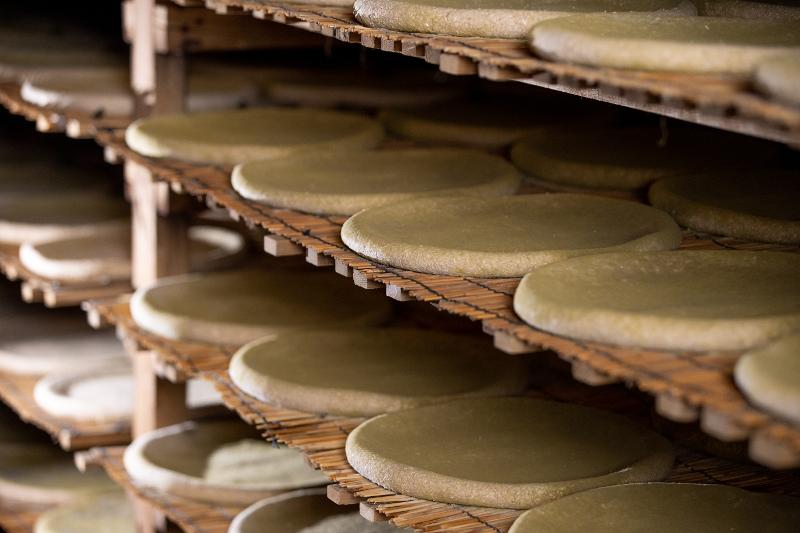
This is the room where Geumjeongsanseong Makgeolli's nuruk is produced, with hundreds of the fermentation starter shown.
After fermentation, nuruk is dried in sunlight for sterilization. After being completely dried, it is broken into smaller pieces, mixed with steamed rice and water, and left to ferment again for about a week. This is how Geumjeongsanseong Makgeolli makes its version of the alcoholic beverage.
Yoo sieved fermented makgeolli and gave a cup to each Korea.net staff member. It was sweet and tasty. Drawn to the sweet and sour smell of the wine, bees flew around his hands as if they were flying around flowers.
On what makes makgeolli appealing, the CEO said, "It might feel a bit thick and rough but soft at the same time. It is filling and pleasant," adding, "Makgeolli contains the sentiments of Koreans."
"It tastes the best when everyone gathers, sings, plays the janggu (traditional drum) and drinks happily."
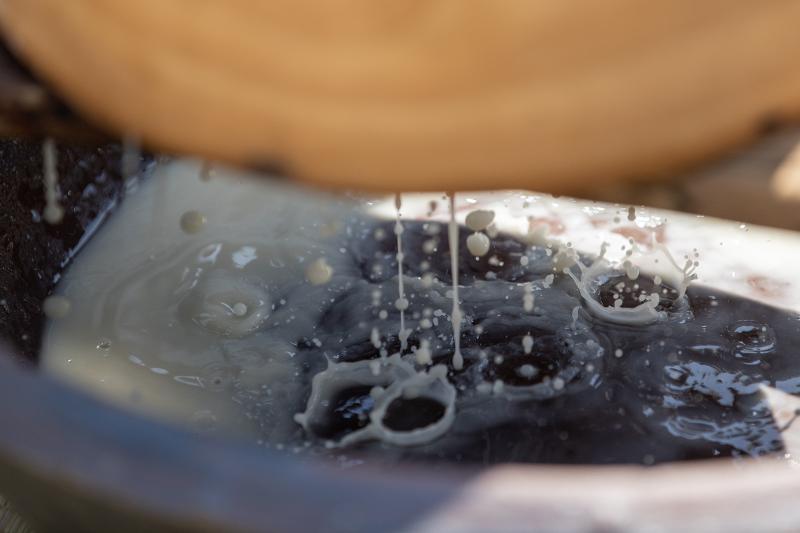
Shown is the process of sieving fermented makgeolli.
Traditional Korean liquor is mainly classified as cheongju (clear alcohol), takju (cloudy alcohol) and soju (clear distilled or diluted alcoholic beverage). Among drinks classified as takju, makgeolli has the lowest alcohol by volume (ABV) as well as a long history, with production methods recorded in documents dating back to the Three Kingdoms era (57 B.C.-A.D. 668).
Makgeolli satiated the thirst and hunger of the nation's ancestors after they finished work. "It was an alcoholic beverage that people poured into a bowl and drank in the fields when they were hungry from agricultural work," Yoo said.
The late poet Cheon Sang-byeong (1930-93) compared makgeolli to food.
Makgeolli was like food to satisfy hunger because of its production methods. In the past, people filtered cheongju from gokju (grain alcohol), which was made with nuruk, water and grains. Water was added to the remaining grains and sieved. The damp remains are what make the drinks feel full.
Modern methods of making makgeolli have seen fundamental changes. Instead of using the leftover dregs after making cheongju, a method of making a more flavorful wine has arisen. Today, brewers produce "premium makgeolli," which has the five tastes of takju (sweet, sour, bitter, puckery and spicy) by using traditional nuruk and shunning artificial flavors.
That is why makgeolli, which was once less popular than beer, soju and wine, is now in vogue.
Makgeolli has also shown strong growth on both the domestic and international markets. A report from the Korea Agro-Fisheries and Food Trade Corp., aka AT, said the liquor market declined 1.6% in 2020 in value but that for makgeolli surged 52.1%. The value of traditional alcohol's retail market also jumped from KRW 300 billion in 2016 to KRW 500 billion last year.
Makgeolli exports have also risen steadily, reaching USD 15.7 million last year, up 27.7% from 2020. Exports in the first quarter of this year rose 11% over the same period to USD 4.24 million, with the main markets being Japan (USD 7.19 million), the U.S. (USD 2.9 million) and China (USD 1.53 million).
By company, makgeolli manufacturer Kooksoondang saw annual exports surpass USD 1 million.
Bae & Brewing Co. last year saw a 274% jump in exports from 2020, while Seoul Jangsoo expanded its shipments to Vietnam, Australia, Cambodia, the U.S. and Japan to raise its export market lineup to 27 countries.
An AT report on 2021 liquor trends attributed the growth of makgeolli exports to "the rise in global interest in Korean culinary culture stemming from the popularity of Korean dramas and movies."
